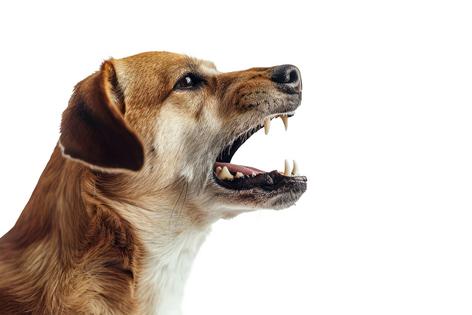My Pet World: Dog aggression — Is it fear or overprotectiveness?
Dear Cathy,
We rescued our Flossie six years ago from South Carolina. She was rescued from a hoarder's house in Georgia. She had puppies at 10 months old. She is house-trained, but eats extremely fast and is aggressive towards other dogs. She growls when she sees other dogs, especially large dogs. She is getting a bad rep in our complex. She looks for humans and wants to be petted and even rolls over so they can rub her belly. Any way to get her to be less aggressive with dogs?
— Michael, Port Jefferson Station, NY
Dear Michael,
Flossie’s early experiences likely formed her current habits and behaviors. For Flossie's fast eating, get a slow-feed bowl. These bowls slow a dog's eating and can help prevent the health issues associated with eating too quickly.
Regarding her aggression, it's a positive sign that she is friendly with humans. Therefore, her aggression toward dogs could stem from being overly protective of you, which would manifest as assertiveness (pulling or positioning herself between you and other dogs), or fear (pulling back and away) of other dogs.
Since this happens mostly with larger dogs, I suspect she may be fearful. In this case, slow, gradual exposure to other dogs can help desensitize her. Start with environments where other dogs are present but keep at a distance where Flossie doesn't feel threatened. Avoid dog parks, and instead frequent parks where you see dogs in the distance with their owners, but they remain far away. Or hang out in a pet store parking lot, always keeping at the distance where she doesn’t react to the other dogs.
Over time, gradually decrease the distance as she becomes more comfortable around other dogs. Reward her with treats and praise when she remains calm in the presence of other dogs to create positive experiences. You also can look for local dog trainers or animal behaviorists offering controlled socialization classes where she can gradually interact with other dogs in a structured environment. These classes can help build her confidence around other dogs.
If her behavior is the result of protectiveness, you will need to reassure her that you are in charge – and the best way to do this is to keep her from being in between you and another dog – regardless of how far away the dog is.
For example, if another dog approaches while walking on the street, either cross the street or step a few feet off the street or sidewalk, use the leash to pull her behind you, hold the leash tight so she has trouble seeing around your legs, and wait for the other dog to pass. Reward Flossie with treats if she remains calm.
Also, teach Flossie to focus on you during walks. Use commands like "watch me" to keep her attention on you rather than on other dogs. I also recommend putting a canine pheromone collar on her as it may reduce her anxiety or agitation, regardless of the reason for her aggression.
Changing behavior takes time. Be patient and persistent with the training and desensitization process and you should begin seeing results in a few weeks.
Dear Cathy,
My Yorkie Shelby always treated my cat as prey, so we moved her into the other half of our house with my sister and two other dogs. Shelby has lived there for many years, interacting with me but not my cat. The cat has passed away, and I would like Shelby back with me (she is 12 now.) She sniffs around when I bring her down but always wants to go back "home." How do I reintegrate her into my end of our house?
— Marcia, Tolland, Connecticut
Dear Marcia,
Start by bringing Shelby over for short visits, gradually increasing the duration of her stay as she gets more comfortable. Bring over some of her favorite toys, bedding, or other familiar items from the other part of the house to help reduce her anxiety. Rub a towel or cloth on the areas where Shelby likes to spend time and place it in your part of the house to transfer familiar scents and make her feel more at ease. Also, engage Shelby in her favorite activities and games in your part of the house to create enjoyable experiences that make her more willing to stay.
Finally, use treats, praise, and affection to reward Shelby when she explores or settles in your part of the house, helping her form a positive association with the new environment. By providing a supportive and loving environment and giving her time, Shelby should gradually become more comfortable in your part of the house.
_____
_____
========
(Cathy M. Rosenthal is a longtime animal advocate, author, columnist and pet expert who has more than 25 years in the animal welfare field. Send your pet questions, stories and tips to cathy@petpundit.com. Please include your name, city, and state. You can follow her @cathymrosenthal.)
©2024 Tribune Content Agency, LLC.
(c) 2024 DISTRIBUTED BY TRIBUNE MEDIA SERVICES, INC.












Comments